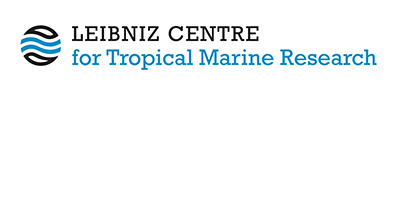Ecological and environmental factors influencing exclusion patterns of phytoplankton size classes in lake systems.
To, Sze-Wing  ORCID: https://orcid.org/0000-0003-3410-3385, Acevedo-Trejos, Esteban, Smith, Sherwood Lan, Chakraborty, Subhendu
ORCID: https://orcid.org/0000-0003-3410-3385, Acevedo-Trejos, Esteban, Smith, Sherwood Lan, Chakraborty, Subhendu  ORCID: https://orcid.org/0000-0002-2904-9313 and Merico, Agostino
ORCID: https://orcid.org/0000-0002-2904-9313 and Merico, Agostino  ORCID: https://orcid.org/0000-0001-8095-8056
(2024)
Ecological and environmental factors influencing exclusion patterns of phytoplankton size classes in lake systems.
Ecological Complexity, 61
.
p. 101115.
DOI https://doi.org/10.1016/j.ecocom.2024.101115.
ORCID: https://orcid.org/0000-0001-8095-8056
(2024)
Ecological and environmental factors influencing exclusion patterns of phytoplankton size classes in lake systems.
Ecological Complexity, 61
.
p. 101115.
DOI https://doi.org/10.1016/j.ecocom.2024.101115.
|
Text
To.pdf - Published Version Available under License Creative Commons: Attribution 4.0. Download (4MB) |
Abstract
For decades, ecologists have been intrigued by the paradoxical coexistence of a wide range of phytoplankton types on a seemingly limited number of resources. The interactions between environmental conditions and trade-offs emerging from eco-physiological traits of phytoplankton are typically proposed to explain coexistence. The number of coexisting types over ecological time scales reflects what we call here ‘exclusion patterns’, that is, the temporal removal of certain phytoplankton types due to competition. Despite many observational and mathematical modelling efforts over the last two decades, we still know surprisingly little, in quantitative terms, about how the interplay of nutrient regimes and specific zooplankton grazing strategies affects the exclusion patterns of competing phytoplankton types. Phytoplankton types can be distinguished according to many different traits. Among various morphological traits, phytoplankton cell size is considered one of the most meaningful in explaining crucial eco-physiological processes, including nutrient uptake and zooplankton grazing. Here we use a size-based plankton model to investigate exclusion patterns of phytoplankton size classes over ecological time scales and under varying environmental conditions. We performed numerical experiments under different allometric scaling relationships, different combinations of specialist and generalist grazing strategies, different inorganic nutrient regimes, and different mixing frequencies. We quantified exclusion patterns by using two metrics: (1) coexistence, defined here as the average number of size classes present over the first 30 days of the simulations, and (2) exclusion time scale, defined here as the time required to outcompete 80 % of the size classes present in the system at the beginning of the simulations. Under low nutrient regimes, we found that the impact of grazing on the exclusion patterns of phytoplankton was almost negligible. Under high nutrient regimes, different exclusion patterns emerged depending on the grazing strategy. When the community of zooplankton was dominated by generalist grazers, we found higher coexistence and longer exclusion time scales of phytoplankton size classes than when the community of zooplankton was dominated by specialist grazers. We further found that the combined effects of grazing strategies and allometric relationships on the size structure of the phytoplankton community were significant and non-trivial. We thus argue that plankton models disregarding these processes may miss relevant drivers of phytoplankton community assembly and trait diversity.
| Document Type: | Article |
|---|---|
| Programme Area: | PA2 |
| Research affiliation: | Integrated Modelling > Systems Ecology |
| Refereed: | Yes |
| Open Access Journal?: | No |
| DOI: | https://doi.org/10.1016/j.ecocom.2024.101115 |
| ISSN: | 1476945X |
| Date Deposited: | 13 Feb 2025 08:52 |
| Last Modified: | 13 Feb 2025 08:52 |
| URI: | https://cris.leibniz-zmt.de/id/eprint/5579 |
Actions (login required)
 |
View Item |





 Tools
Tools Tools
Tools